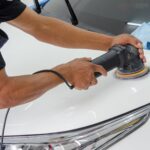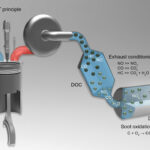
Car enthusiasts understand that vehicles are more than just machines; they’re works of engineering artistry. Among the many components that make up a car, one often overlooked yet crucial part is the fender. Fenders play a vital role in protecting your vehicle’s structure, enhancing aerodynamics, and contributing to its overall aesthetics.
In this comprehensive guide, we’ll delve into the world of car fenders, exploring their types, materials, functions, maintenance, and even opportunities for customization.
Different Types of Car Fenders
First, let’s take a closer look at the various types of car fenders that grace the roads today. Understanding these types will not only deepen your appreciation for your vehicle but also help you make informed choices regarding maintaining or upgrading your fenders.
Front fenders are the ones you see first when you approach a car. They cover the front wheels and play a pivotal role in protecting the engine bay from road debris. Rear fenders encompass the rear wheels and are designed to shield the trunk or cargo area. They also contribute to the vehicle’s overall balance and aesthetics.
Specialty fenders are found on unique vehicles like off-road trucks or specialty cars. They may have distinctive shapes, sizes, or features to suit specific purposes, such as accommodating oversized tires.
Fender Materials
Car fenders come in various materials, each with its own set of benefits and characteristics. The choice of material can affect a car’s weight, performance, and even its longevity. For example, steel fenders are durable and offer excellent impact protection. They’re commonly found in traditional vehicles and are known for their resistance to dents and dings.
Aluminum fenders are lightweight and corrosion-resistant. They’re favored for their contribution to improved fuel efficiency. Composite fenders often combine materials like fiberglass and plastic. They provide a balance between durability and weight reduction. There are also carbon fiber fenders, which are lightweight and incredibly strong. These are a top choice for high-performance and sports cars.
Also Read:
- Top 5 Best Cordless Impact Wrench For Changing Tires
- Top 5 Best Battery for Jeep Wrangler
- 18 Best Car Gadgets and Accessories for Road Trips
The Role of Fenders in Vehicle Aerodynamics and Safety
Car design is not just about aesthetics; it’s also about functionality. Fenders play a significant role in a vehicle’s aerodynamics and safety. Here’s how:
1. Aerodynamics
Fenders are carefully designed to optimize airflow around the wheels and reduce drag. Well-designed fenders contribute to improved fuel efficiency and stability at high speeds.
2. Safety
Fenders act as protective shields, preventing road debris, mud, and water from being thrown onto other vehicles or pedestrians. They also serve as a barrier between the tires and the engine compartment, offering crucial safety in the event of a collision.
Signs of Fender Damage and When to Repair or Replace Them
Fenders are susceptible to wear and damage like any other part of your car. Recognizing the signs of fender damage is essential for maintaining your vehicle’s safety and aesthetics. For example, minor dents or dings can often be repaired through techniques like paintless dent removal. Extensive damage may require fender replacement.
Rust can weaken fenders and compromise their structural integrity, so address these issues promptly to prevent further damage. Cracks or tears in fenders can allow moisture and debris to enter the underlying structure. Damaged fenders should be replaced to maintain safety and aesthetics.
Fender paint damage, such as chipping or peeling, can detract from your car’s appearance. Repainting or refinishing may be necessary to restore the fender’s visual appeal. Also, misaligned fenders can result from collisions or accidents. Proper alignment is crucial to maintain aerodynamics and safety.
How to Maintain and Protect Your Car’s Fenders
Caring for your car’s fenders is not only about aesthetics but also about preserving their functionality. To maintain and protect your fenders, wash your car regularly to remove debris, mud, and salt that can cause corrosion. Pay special attention to the fender wells and undersides.
Apply wax or a sealant to your car’s exterior, including the fenders, to protect against the elements and maintain a glossy finish. Use rust-inhibiting products on fenders that may be prone to corrosion. Monitor vulnerable areas, such as the fender edges and wheel arches. Also, check and replace damaged fender liners or inner splash shields to prevent debris from damaging your fenders.
It pays to install mud flaps and quality fender flares to reduce the risk of road debris damage, especially for off-road or SUV enthusiasts.
Whether you’re preserving the classic elegance of a vintage car or enhancing the off-road capabilities of your SUV, your fenders play a crucial role. The next time you admire a vehicle’s sleek lines or rugged appearance, take a moment to appreciate the unsung heroes beneath the surface—the car’s fenders, quietly working to ensure your safety and style on the open road.








